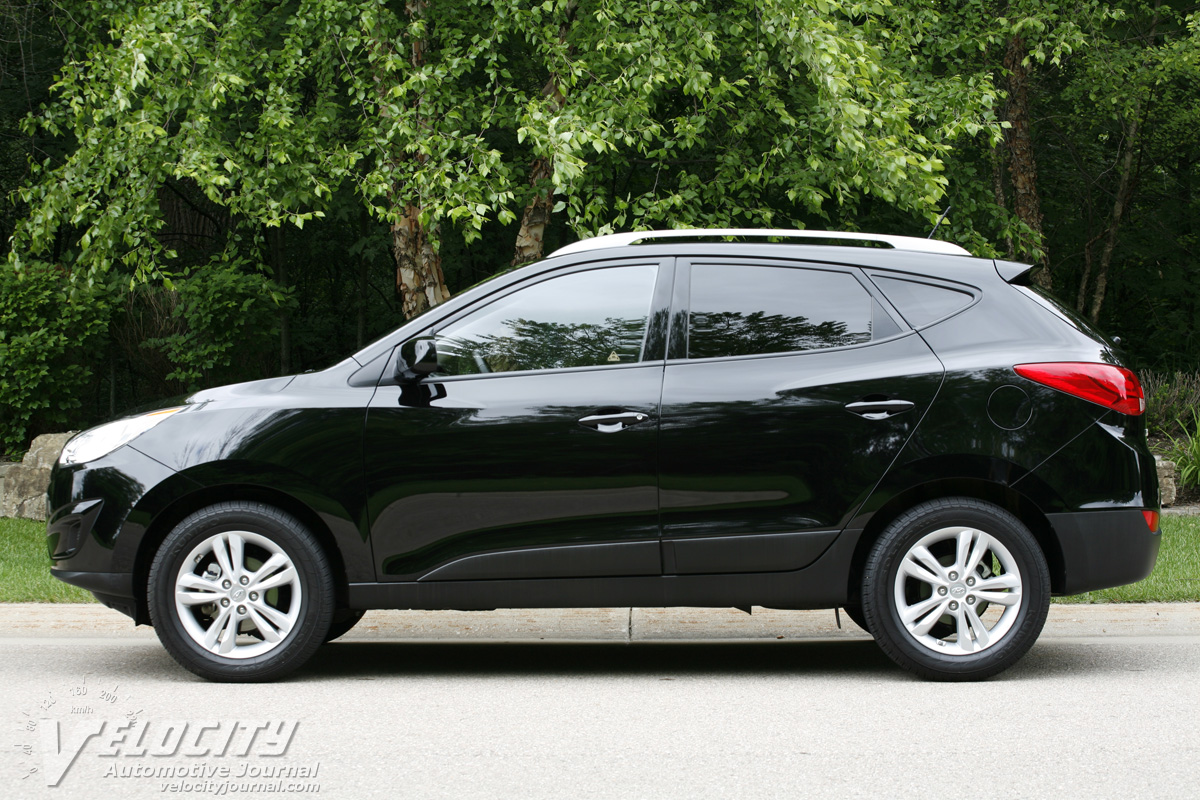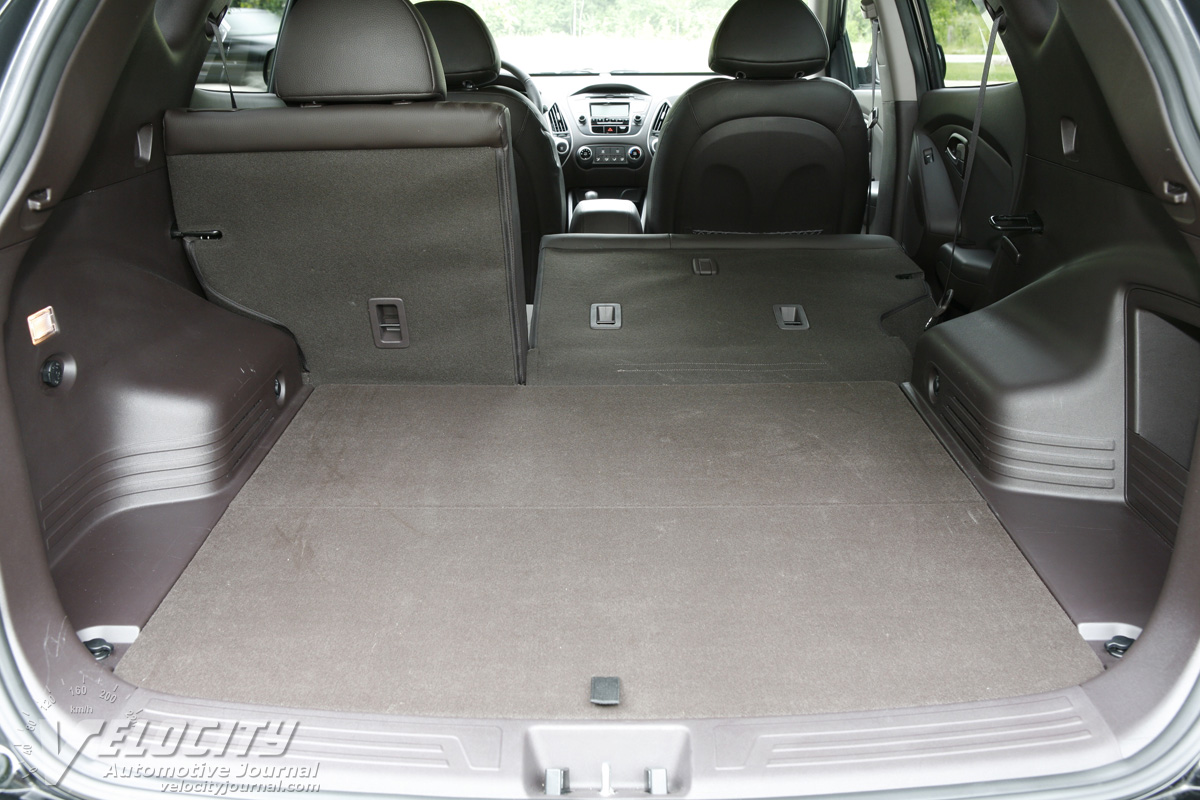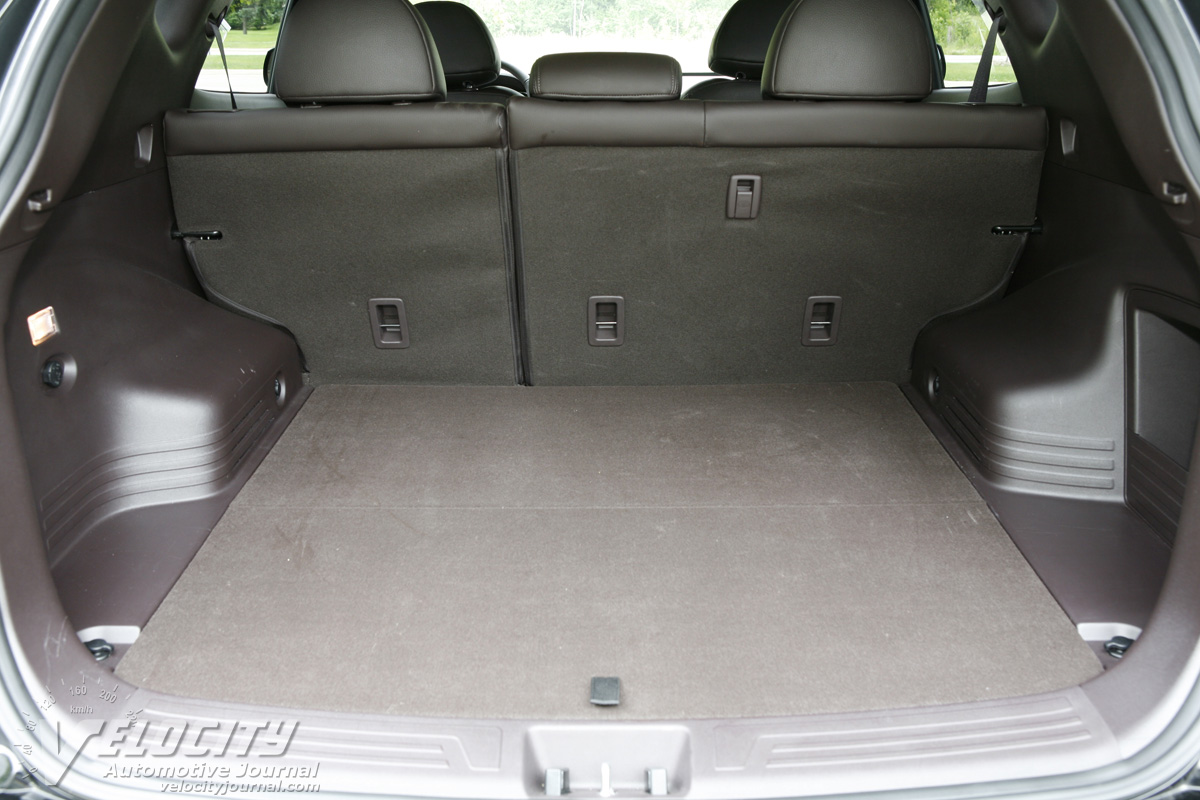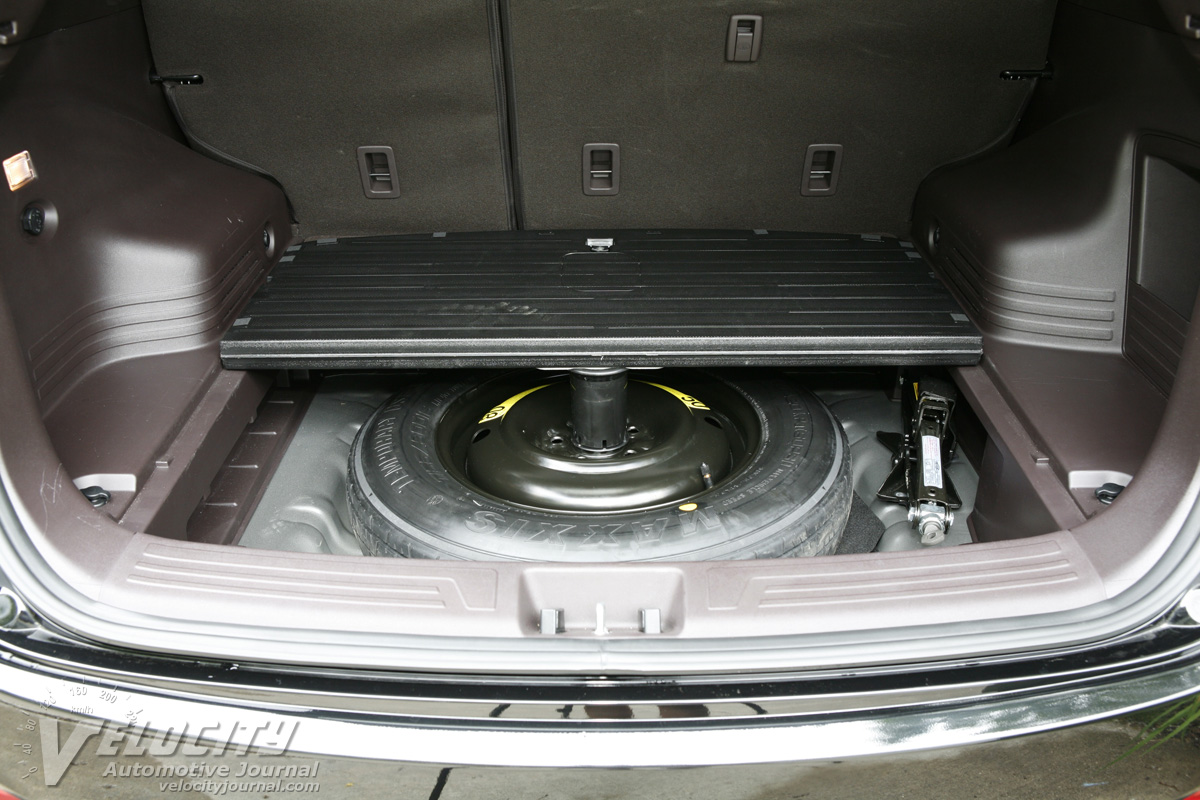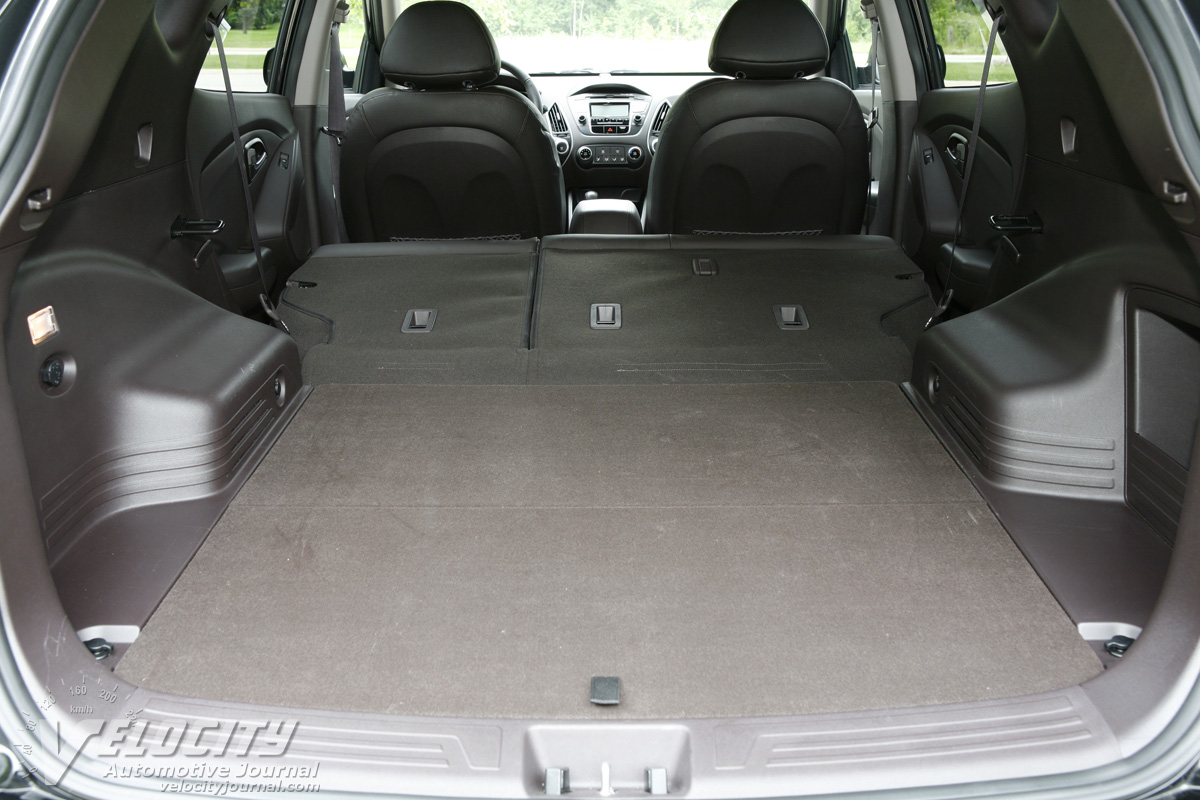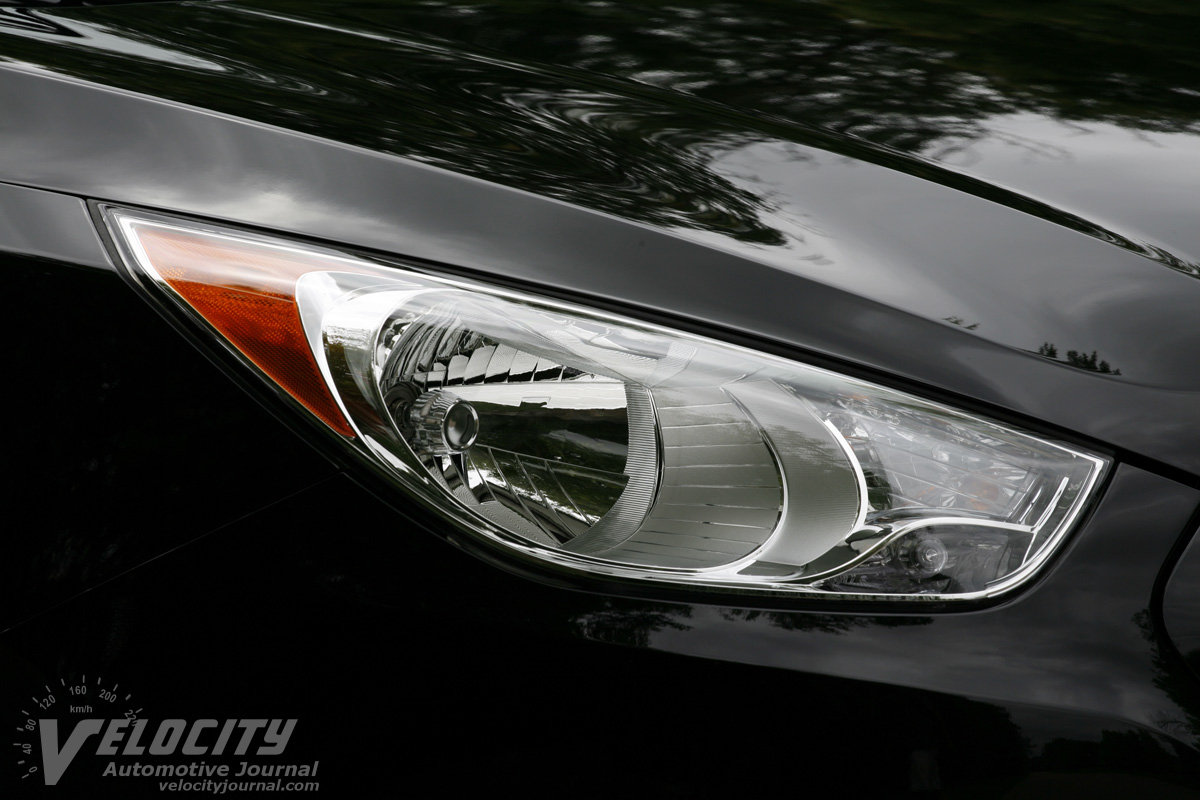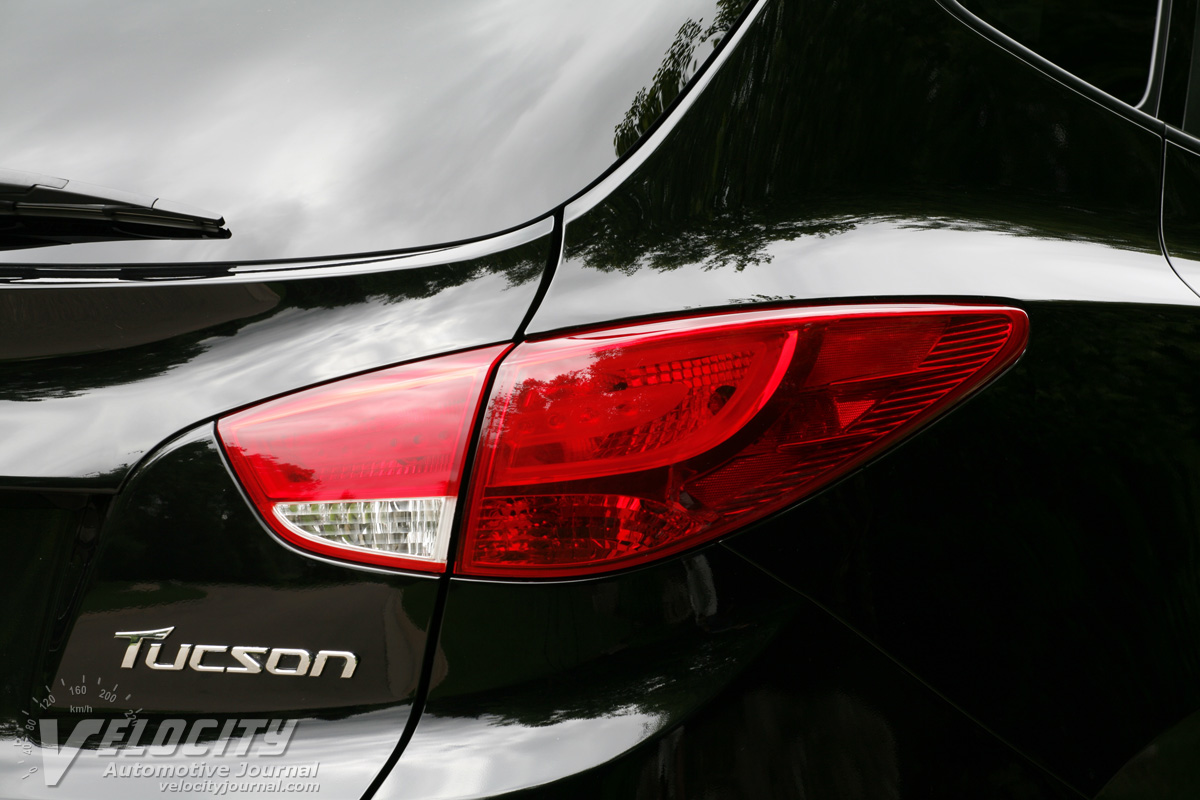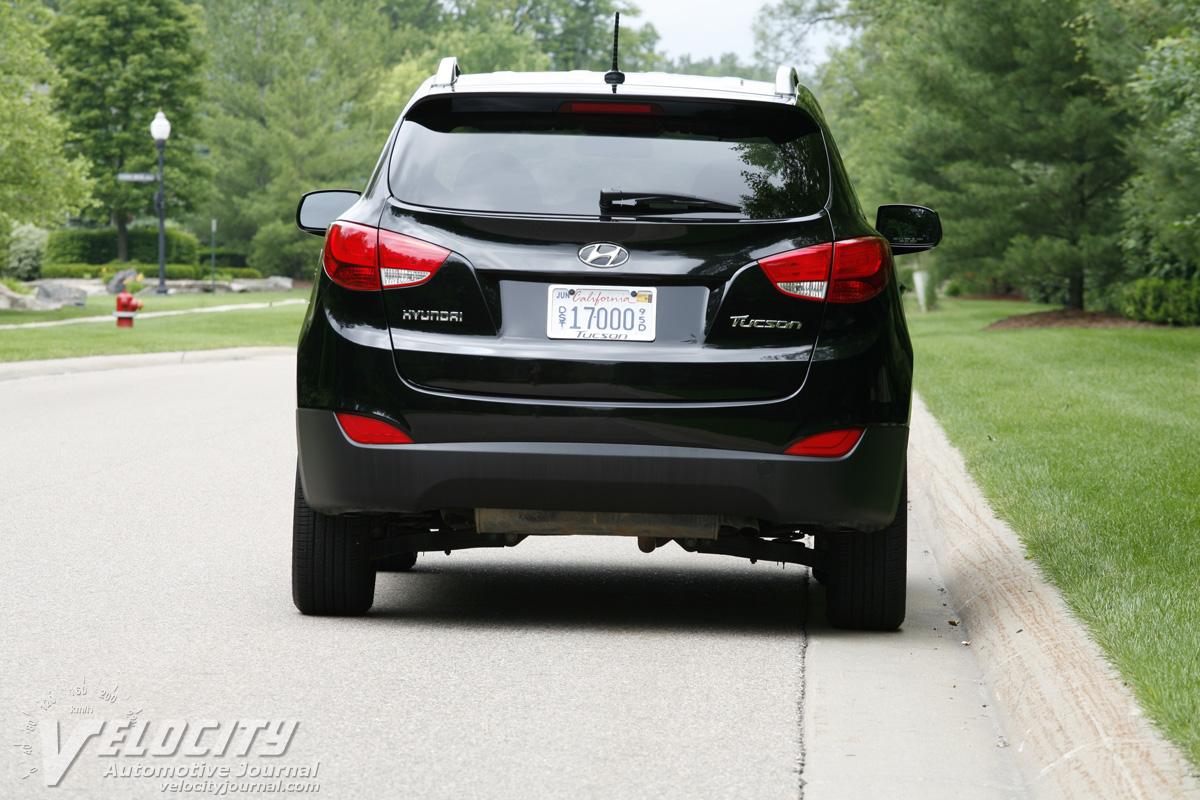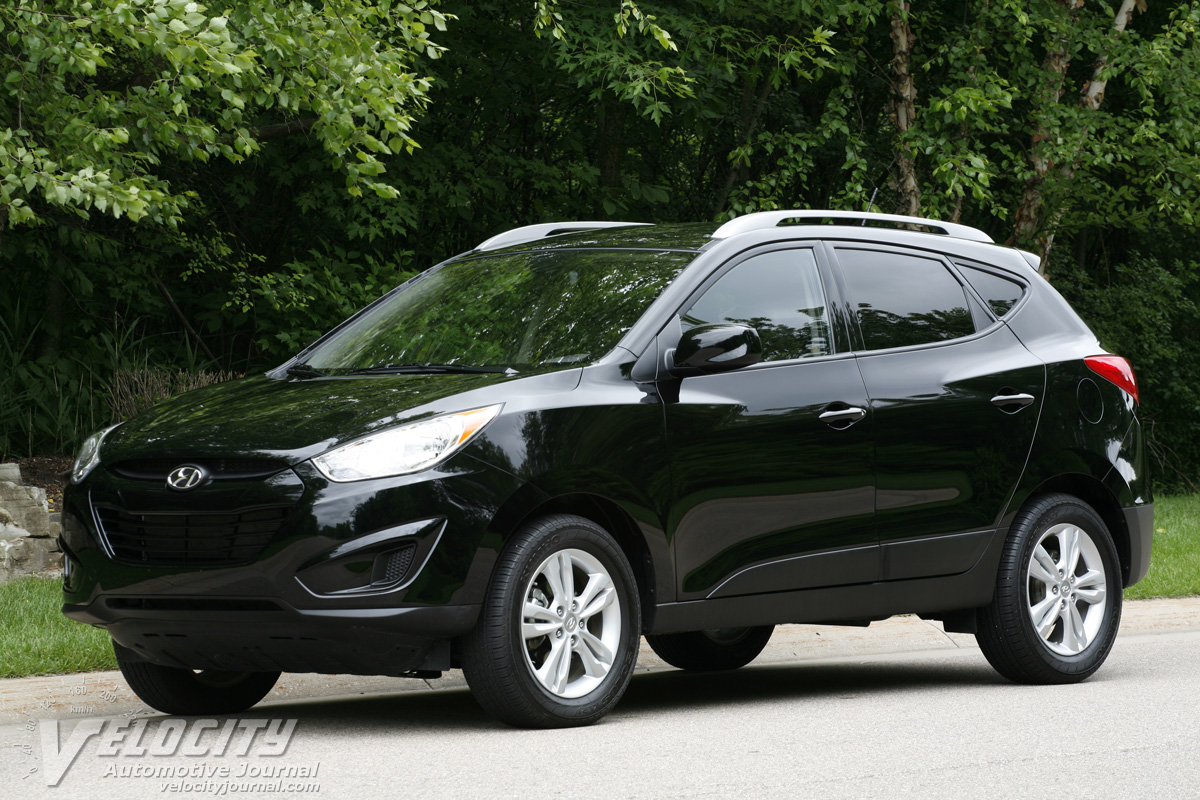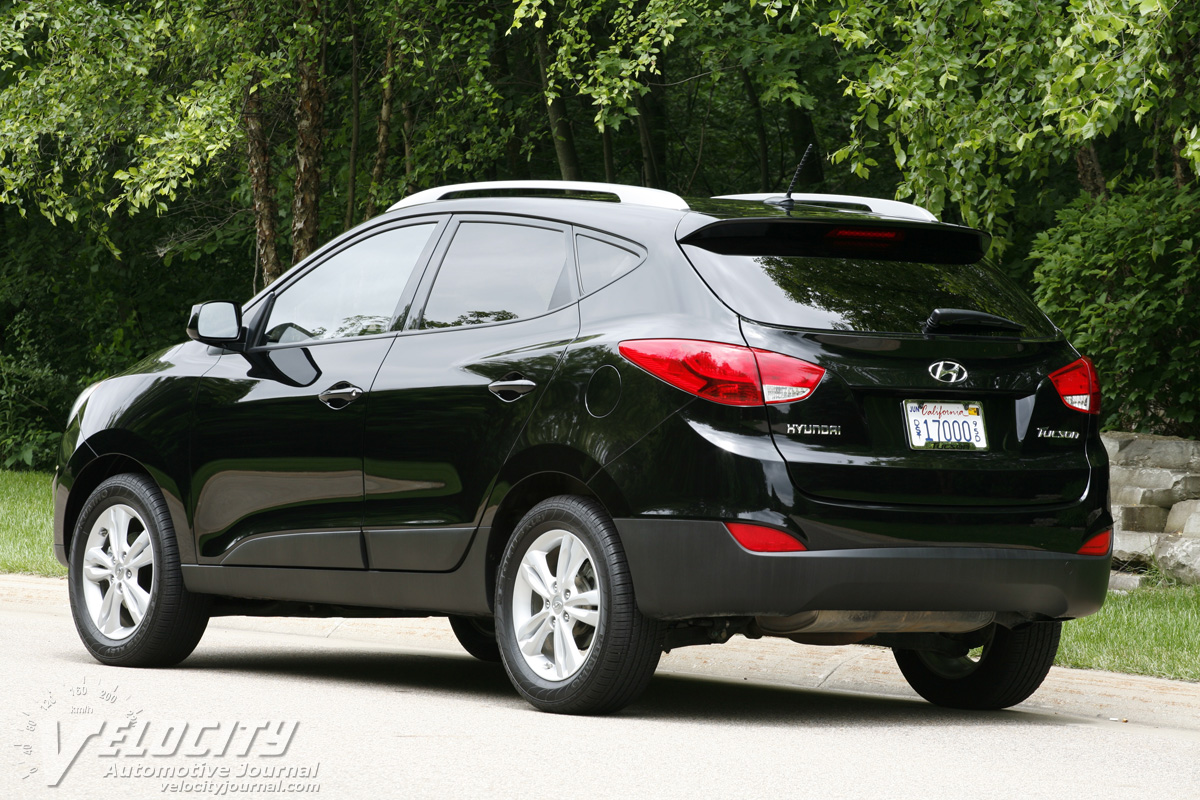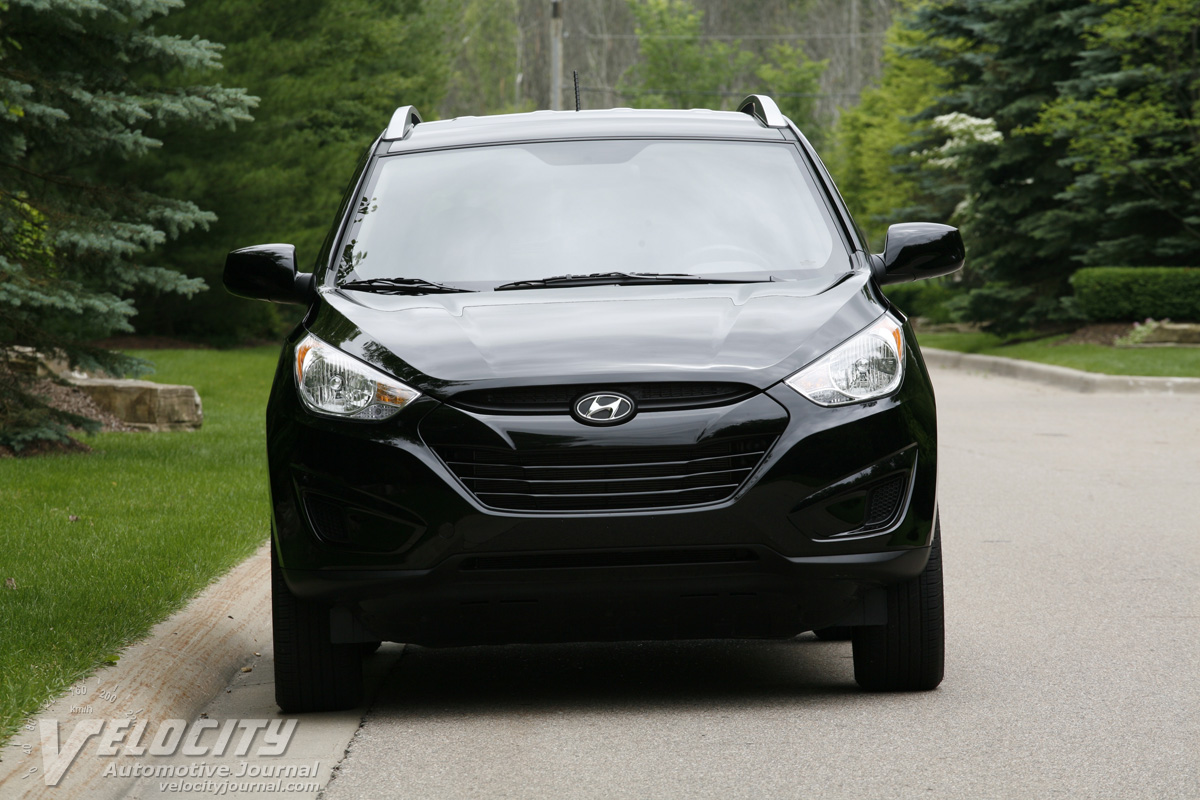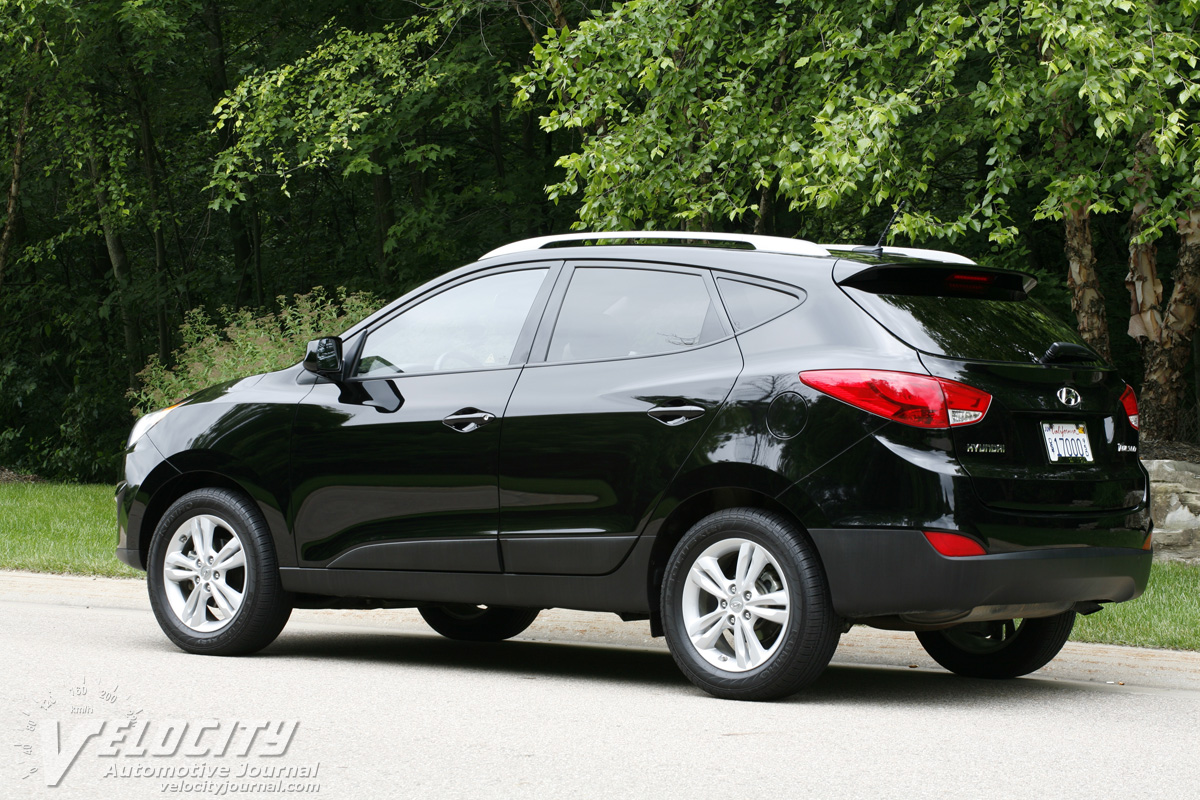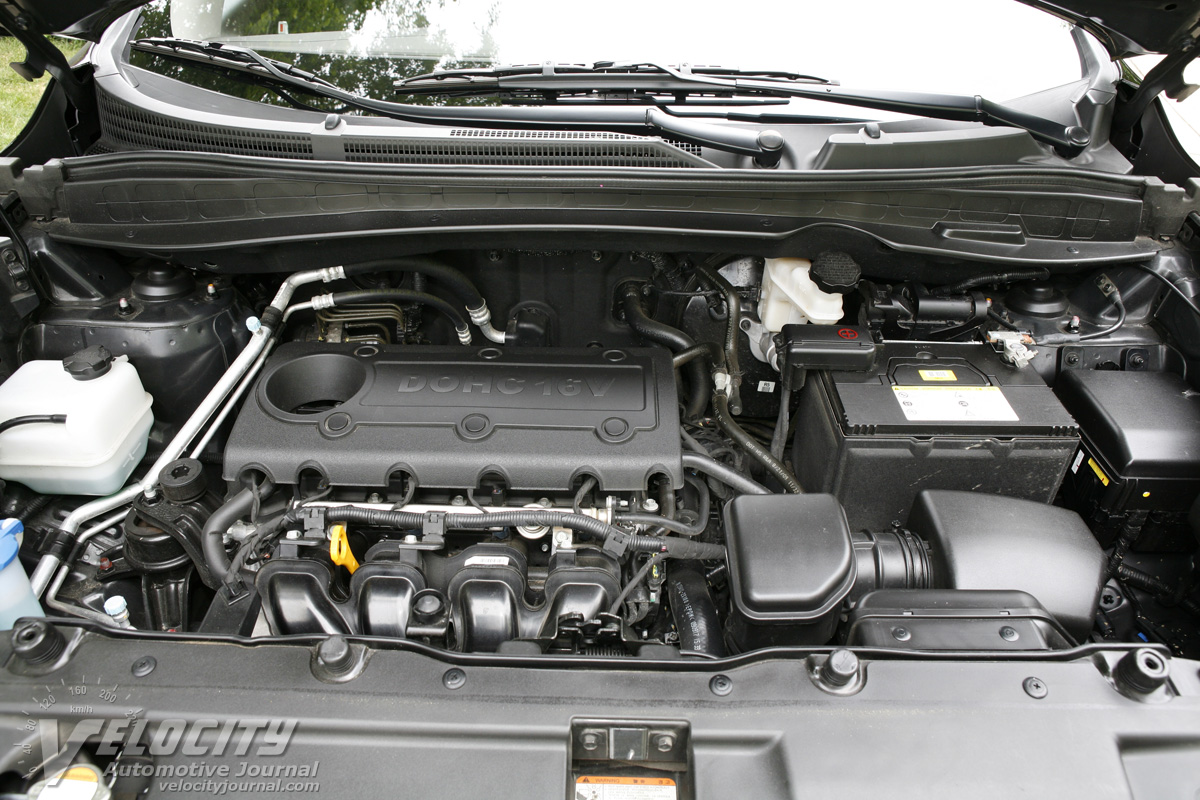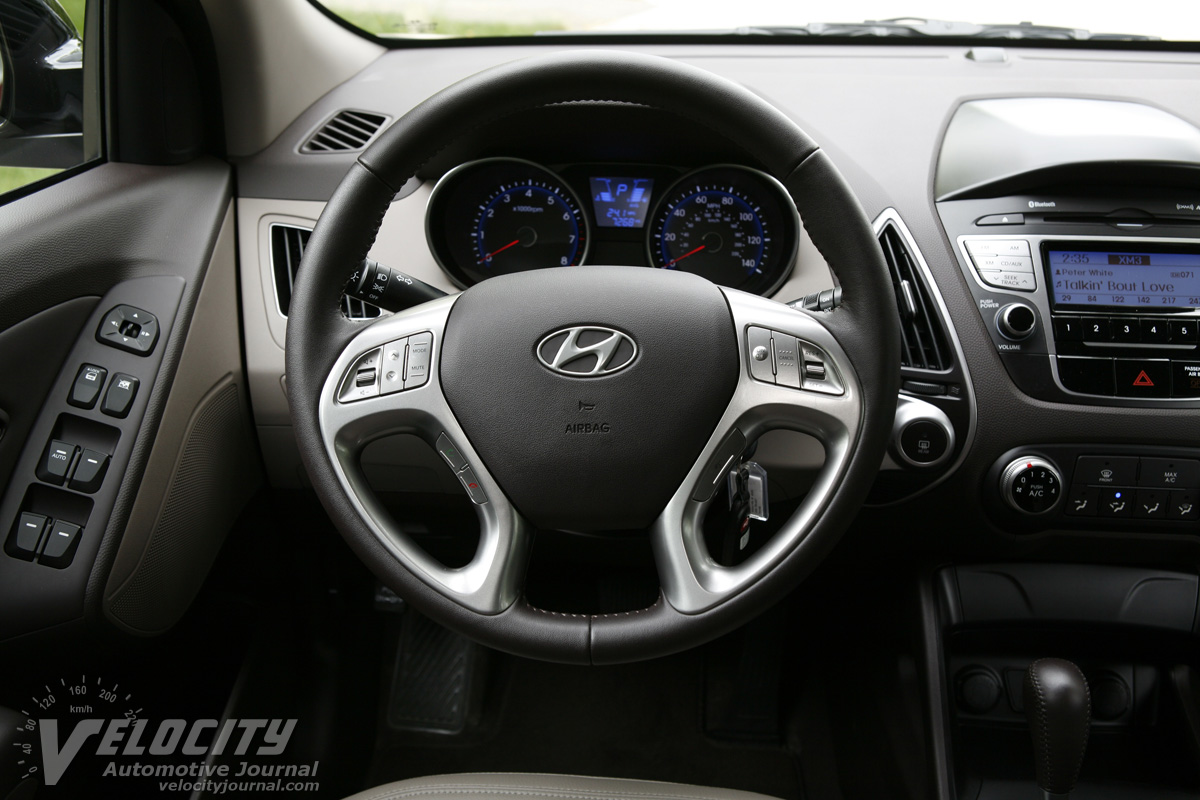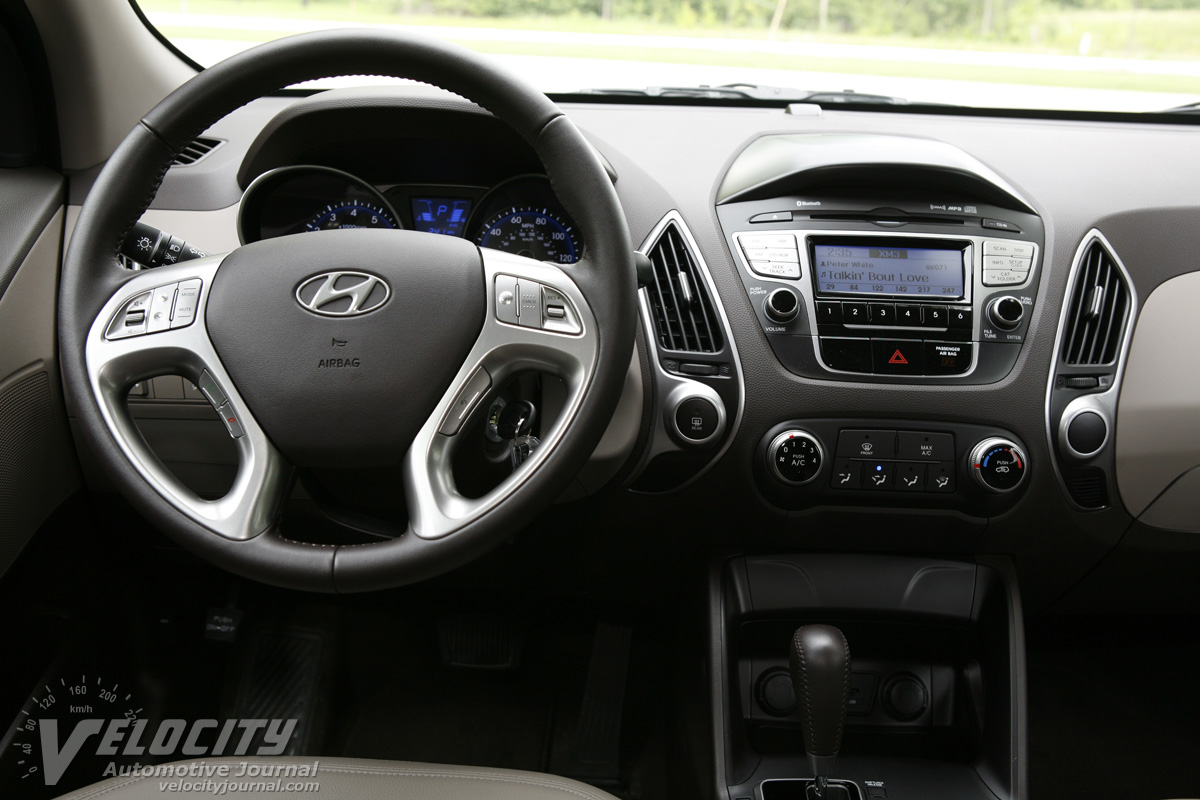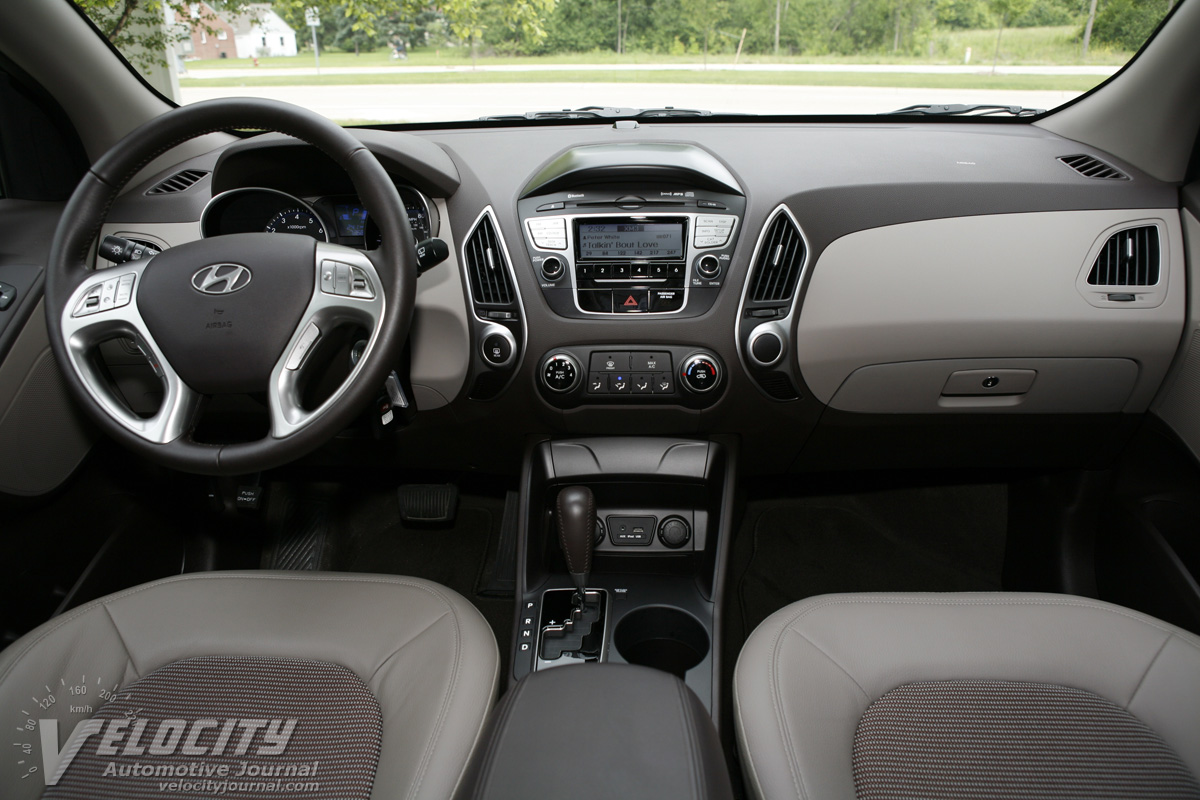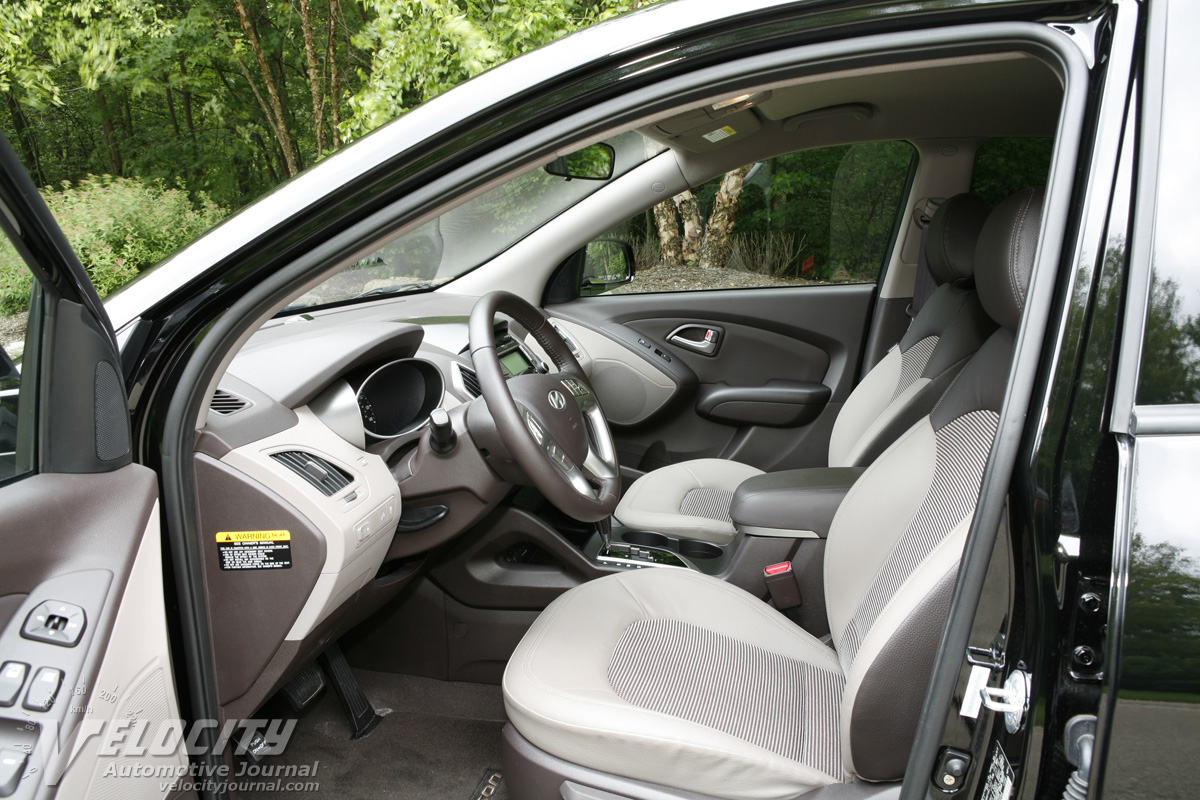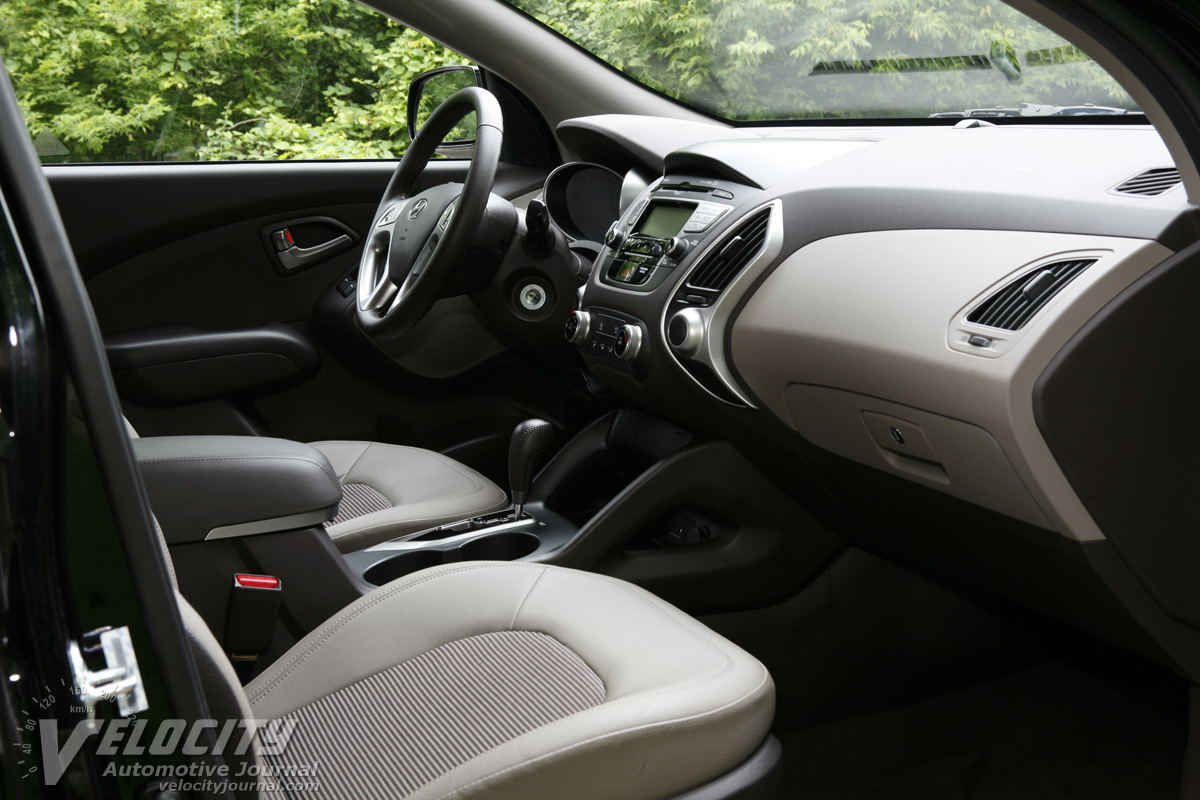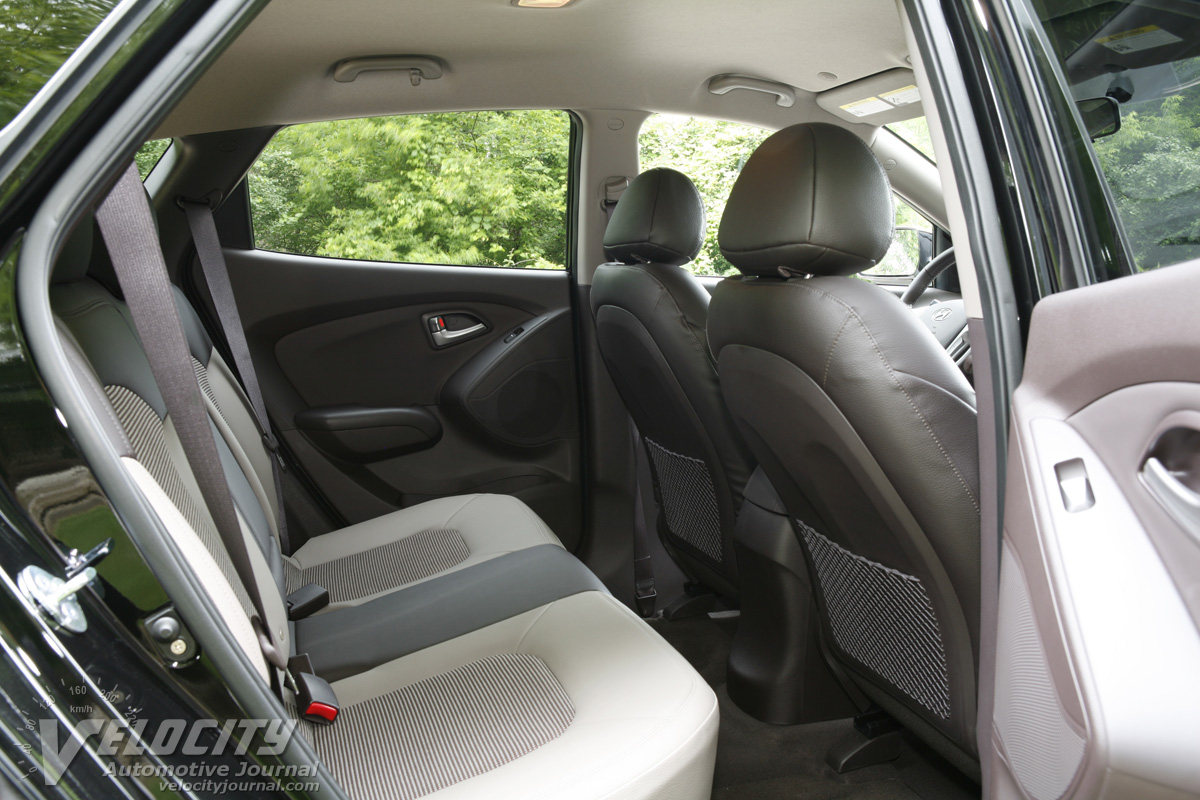2010 Hyundai Tucson GLS
06/17/2010
Shahed Hussain
The new Tucson from Hyundai looks radically different from its predecessor, but still faces daunting competition from the Honda CR-V, Ford Escape, and Toyota RAV4. In its favor is attractive pricing that starts at just $18,745 (Tucson GLS) and ranges up to $28,695 (Tucson Limited AWD). Designed in Germany, the Tucson along with the Sonata sedan incorporates Hyundai's "Fluidic Sculpture" design philosophy which emphasizes flowing curves and sharp creases. Both the Tucson and the Kia Sportage share the same platform, but the Kia's significantly different styling sets it apart from the mechanically similar Hyundai.
In the US, the most popular model will likely be the Tucson GLS ($21,845). We tested this model equipped with the Popular Equipment Package ($1,700). An available GPS navigation package includes a rearview camera and an upgraded audio system for an additional $2,000. The on-demand all-wheel drive system is a $1,650 option. Note that Hyundai has reshuffled option packages and trim levels for the 2011 Tucson; among the changes is a new base GL model positioned below the GLS.
The Tucson's interior design features attractive textures and colors, although the hard plastic dashboard and upper door panels indicate cost-cutting. A leather-wrapped steering wheel includes controls for audio, cruise, and Bluetooth phone. The 8,000 RPM tachometer and 140-MPH speedometer get individual binnacles; bar graphs for fuel level and coolant temperature are shown in the center multi-function display. A straightforward center stack has simple buttons and knobs for the audio and climate control systems. Dual 12V outlets are conveniently located next to a line-in jack and USB port on the center console. Next to the gated shift lever are dual cupholders sized generously for quart-size drinks. Door pockets store drinks and a bin under the center armrest provides additional storage.
The cloth/vinyl seats on our test vehicle were comfortable and supportive, but the flat cushions lacked adequate bolstering. GLS models get manual 6-way driver seat adjustments. A power 8-way seat with lumbar support is standard on the Tucson Limited, along with heated front seats, and leather upholstery. Front and rear headroom is ample for 6-ft. tall passengers; the rear seats provide adequate legroom, but lack thigh support. With the back seats folded down, the Tucson offers a nearly flat load floor for cargo. A temporary spare tire is conveniently located under the floor behind the seats for easy access.
Hyundai's new Theta II inline-4 powers the Tucson via a 6-speed manual or automatic. The all-aluminum 2.4L DOHC powerplant uses continuous variable valve-timing (CVVT) to achieve 176-bhp @ 6,000 RPM and 168 lb.-ft. @ 4,000 RPM. As expected, throttle response at low and mid-RPM is decent, but tapers off noticeably above 70 MPH. When cruising in sixth gear, the 2.4L remains unobtrusive, but as the revs climb above 4,000 RPM, the racket from the engine bay leaves no doubt that a large-displacement four resides within. Even so, the Theta II shows similar noise and vibration characteristics relative to most other engines in its class.
A 6-speed manual was the standard gearbox on 2010 Tucson GLS, but is no longer available for 2011. However, most customers will likely prefer the smooth-shifting 6-speed automatic. The gated shifter allows manual gear selection when desired, but we rarely needed to do so. To encourage efficient driving habits, an "ECO" light on the instrument glows green when the driver uses moderate throttle opening to reduce fuel consumption. Mated to the 2.4L engine, the close-ratio Shiftronic gearbox delivers decent acceleration and above average mileage; the EPA rates the automatic-equipped Tucson at 23/31 MPG (city/hwy.), which is one MPG better than with the 6-speed manual. The AWD/automatic powertrain achieves a less impressive 21/28 MPG (city/hwy.). We managed just less than 24 MPG overall in mixed urban and highway driving. Hyundai rates the Tucson to tow a 2,000 lbs. trailer (with trailer brakes).
The Tucson's suspension consists of a MacPherson struts, dampers, coil springs, and a stabilizer bar; at the rear is a multi-link setup with coil springs, dampers, and stabilizer bar. Power-assist for the track-and-pinion steering is motor-driven and engine-speed sensitive. Disc brakes are at all four wheels with standard ABS and ESC (Electronic Stability Control). Our tested GLS was shod with P225/60HR17 Kumho Solus tires mounted on 5-spoke alloy wheels. Moving up to the Tucson Limited adds 18-inch alloy wheels with lower profile P225/55HR18 tires.
Typical for compact SUVs, the Tucson understeers consistently, accompanied by moderate body roll implying unimpressive handling limits. In its effort to ensure safe handling, it seems that Hyundai dialed in damper and spring rates better suited for a sporty coupe than a compact SUV. On the highway, the stiff suspension results in a brittle, choppy ride that we considered barely acceptable. To compound our discomfort, the Kumho tires track poorly at 70 MPH, requiring constant steering corrections. Although the Tucson's ride and handling deficiencies are less notable for daily commuting, we would certainly prefer an alternative vehicle for extended road trips.
Hyundai's redesign has nearly closed the gap with its American and Japanese competition, but without a significant pricing advantage, the Tucson GLS appeal begins to fade. Compared against the Ford Escape, Honda CR-V, Toyota RAV4, or Chevrolet Equinox, the Tucson doesn't offer much to attract customers. This is really no fault of Hyundai, as the popular compact SUV segment has long been brutally competitive.

